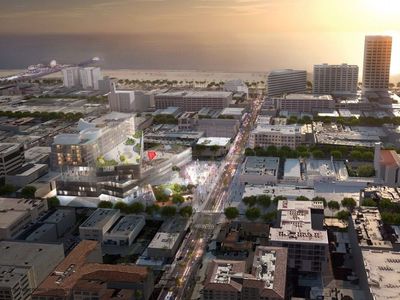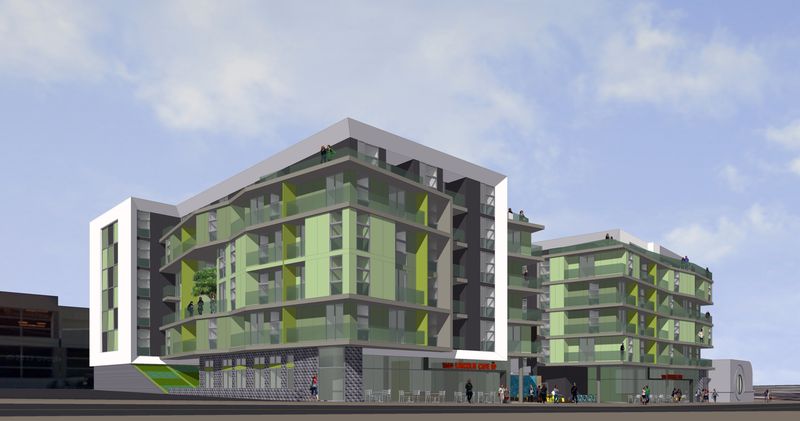
A group of residents is trying to curtail high-rises
A stringent measure to choke off high-rise development in booming Santa Monica will be decided by voters. The Santa Monica City Council voted unanimously Tuesday night to place an initiative titled the “Land Use Voter Empowerment,” or LUVE, on the November ballot.
LUVE would subject new construction taller than 32 feet or two stories to voter approval. That includes such projects as the Plaza at Santa Monica, a big mixed-user proposed for downtown at Arizona Avenue between 4th and 5th streets that could soar to 148 feet.
“Thirty-two feet is just too drastic,” said Vazquez.
“Developers will always build to the maximum if you allow them. When you have this voter approval in place, in fact, voters will approve good plans,” said Himmelrich. But, “I actually don’t think this is the ideal metric.”
The Plaza, as proposed, would include 195 hotel rooms and 48 affordable units, plus lots of office space and retail. It’d be built via a development agreement, a contract between the city and the developer, which allows it to build bigger than what the zoning codes allow in exchange for the developer providing so-called community benefits.
Santa Monica city planners estimate LUVE would immediately impact nine smaller housing projects totaling 570 units. Here’s their longer-term forecast:
Since virtually all new development over two stories in the City would be subject to voter approval, it is possible that there would be dozens of projects appearing on election ballots at both regularly scheduled and special elections.
It is also possible that property owners will decide to either not redevelop their properties or propose projects … in order to avoid the voter approval process.
A former Santa Monica planning commissioner who blogs about urban issues, posed this question on his website: “Let’s say you do want to vote on them all—are you ready, willing and able to review the hundreds of pages of documentation and plans necessary to conscientiously evaluate each project?”
Some development would be exempt: Single family homes, senior housing, and affordable housing projects with fewer than 50 units. (Read the measure’s full text here.)
 via Santa Monica city planning
via Santa Monica city planningThe residents who launched the initiative say a deluge of development is reshaping the physical character of the beach-side city by turning it, “into a high-rise, high-rent concrete urban jungle.”
They’ve organized under a group called “Residocracy,” citing, among a couple of other projects, a proposed renovation and expansion of the Fairmont Miramar Hotel. That project, however, is on hold right now, as are two other big hotel projects. In fact, many commercial projects in downtown have hit the brakes as the city reworks its zoning codes for that area.
“We understand from all three developers of the big three on Ocean (Avenue)—the Wyndham, the Gehry, the Miramar, all three of them are looking at redesigning—so those are all kind of up in the air. We haven’t done anything on those projects in quite a long time now. We’re really waiting for the applicants to come back with us with new designs,” Santa Monica’s planning director, David Martin, told Curbed.
When the Fairmont plans were proposed, “there was a perfect storm,” City Manager Rick Cole told Curbed.
“In the absence of a downtown community plan, people were proposing things that were widely out of scale with development in the city. It led to Residocracy proposing their ballot measure, and it lead to the city council moving forward to adopting a new downtown community plan,” he said.
- LUVE Initiative Placed on Santa Monica Ballot [Santa Monica Lookout]
- Santa Monica Picks Rem Koolhaas’s Taller Plaza at Santa Monica Plans [Curbed LA]
- Santa Monica Halting New Downtown Development for a While [Curbed LA]
- Big LA Anti-Development Measure Seeks Lower Voter Turnout [Curbed LA]
